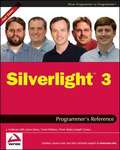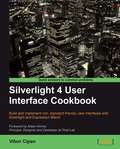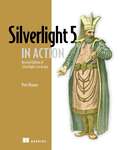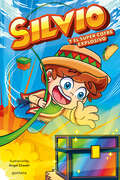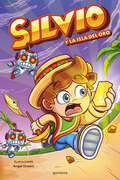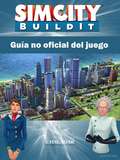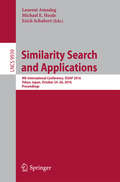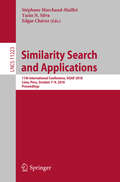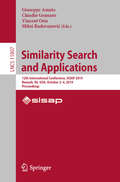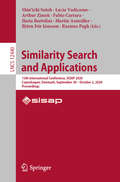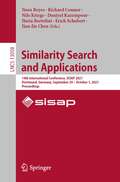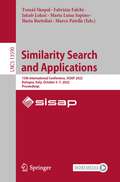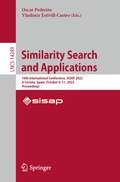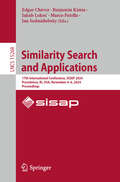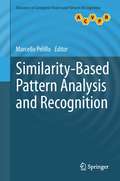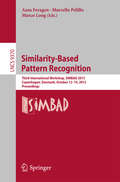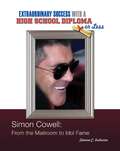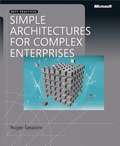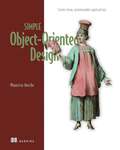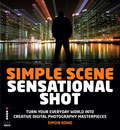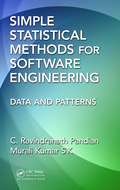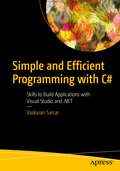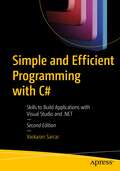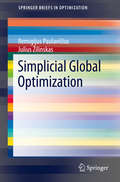- Table View
- List View
Silverlight 3 Programmer's Reference
by Devin Rader Grant Hinkson J. Ambrose Little Jason Beres Joe CroneyThis valuable reference--in full color--explains the major new release of Silverlight 3 which is dramatically improved over previous versions and makes the development of powerful Rich Interactive Applications (RIAs) achievable for everyone. Packed with examples and written by a highly-seasoned team of developers and designers, this book guides you through the languages, tools, and techniques that are used to build applications on the Silverlight 3 platform (Build 40522). Each chapter provides a mini-tutorial on the respective topic, and the examples serve to both educate and inspire you. The information in this book is structured to help prepare you for the real-world challenges you may face when building applications on the Silverlight platform. By the end of the book, you'll have gained a thorough understanding of how Silverlight applications are architected, developed, and designed.This book covers:· XAML basics· Silverlight 3 Tools for Visual Studio 2008, Expression Blend 3 and Silverlight Runtime and SDKTransforming text with render transforms· Using graphics, visuals and adding media for a richer user experience· Building application, making it come alive and responding to user activity· Setting up a control project and using a custom control in an application
Silverlight 4 User Interface Cookbook
by Vibor CipanWritten in a Cookbook style, this book offers learning and techniques through recipes. It contains step-by-step instructions for designers and developers who want to learn about how to design and implement numerous user interface patterns with Silverlight. It will take you a step further by providing you with professional and proven user interface and user experience guidelines wherever possible. The book is designed in such a way that you can explore it chapter-by-chapter, or read it in any order. If you are a developer or designer who knows the basics of Silverlight, has a smattering of C# and XAML, and wants to build applications with elegant and attractive interfaces, then this book is for you.
Silverlight 5 in Action
by Pete BrownSummary A thorough revision of the bestselling Silverlight 4 in Action. This comprehensive guide teaches Silverlight from the ground up, covering all the new v. 5 features in depth. You'll also explore WCF RIA Services, MVVM, and more—with dozens of code samples you can use in Visual Studio 2010 or the free Visual Web Developer 2010 Express. About the Book This hands-on guide explores Silverlight from the ground up, covering every feature in rich, practical detail. It is readable and the coverage is comprehensive. You'll master networking, MVVM, and more—with dozens of code samples you can use in Visual Studio or the free Visual Web Developer Express. Silverlight 5 in Action teaches you how to build desktop-quality applications you can deploy on the web. Beginners will appreciate the progression from simple examples to full applications that employ good design and coding practices. Seasoned . NET developers will love how the sample code embraces and extends what they already know. Purchase of the print book comes with an offer of a free PDF, ePub, and Kindle eBook from Manning. Also available is all code from the book. What's Inside 2D and 3D graphics and animation Business application services, rules, and validation The MVVM pattern and testing Free appendixes (150 pages) available online A background in C# or VB.NET is helpful, but no knowledge of Silverlight or XAML is required. ============================================ Table of Contents PART 1 CORE SILVERLIGHT PART 2 CREATING THE USER INTERFACE PART 3 WORKING WITH DATA AND SERVICES PART 4 2D AND 3D GRAPHICS PART 5 MAKING THE MOST OF THE PLATFORM PART 6 BEST PRACTICES Introducing Silverlight XAML and the property system The application model and the plug-in Working with HTML and browsers Out-of-browser applications The security model and elevated trust Rendering, layout, and transforming Panels Human input Text fundamentals Editing plain and rich text Control basics and UserControls Animation and behaviors Resources, styles, and control templates Extensions, converters, custom controls, and panels Binding Data controls: DataGrid and DataForm Input validation Networking basics Working with SOAP services RESTful services with the ASP.NET Web API Working with XML, JSON, RSS, and Atom Duplex, sockets, and local connections Graphics and effects Working with images Introduction to 3D 3D lighting, texturing, and animation Pop-ups, windows, and full-screen applications Navigation Working with files and directories Printing COM, Native Extensions, and p-invoke Structuring and testing with the MVVM pattern Debugging your application The install experience and preloaders
Silvio y el supercofre explosivo
by Silvio Gamer¡Silvio Gamer, el youtuber que arrasa en las redes, llega a las librerías con su primera gran aventura! ¡Qué locura! Este va a ser el mejor día de la vida Silvio... Bueno, si consigue no meter la pata: PRIMERO: Ha sido invitado al Supercampeonato. ¡Un gran honor! SEGUNDO: Solo las criaturas más poderosas pueden participar. ¡Como él!TERCERO: ¡El premio es nada más y nada menos que un Supercofre! Pero lograrlo no va a ser nada fácil. Para ganar, Silvio va a tener que superar 10 niveles repletos de ríos de lava, llucias de meteoritos, animalesgigantes, explosivos por cada rincón... ¡Y todo esto junto con Thor, su poderosísimo compañero para esta aventura! ¿Conseguirán llegar hasta la línea de meta?
Silvio y la isla del oro
by Silvio Gamer¡Llega la nueva aventura de Silvio Gamer, el youtuber que arrasa en las redes! ¡SILVIO Y SUS AMIGOS HAN ENCONTRADO LA MEJOR ISLA DEL MUNDO! Es una isla perdida llena de linotes de oro puro. Pero... ¿por qué hay peligrosos robots que los persiguen? Silvio tendrá que ser el más rápido si quiere conseguir el oro antes de que los robots acaben con él. Pero hay un problema... ¿Dónde se han metido todos sus amigos?¡Apúntate a esta aventura y explora todos los rincones de la isla de oro!
Sim City Buildit Guía no oficial del juego
by Hiddenstuff Entertainment Cristian García HerreroCon mi Guía de Juego aprenderás exactamente lo que necesitas saner para convertirte en un jugador experto, ¡y conseguir montones de recursos para construir la ciudad definitiva! Esta es una guía completa con todo lo que debes saber acerca del juego. - Vista General e Información Básica. - Consejos Profesionales y Estrategias. - Cómo Conseguir Montones de Dinero. - Cómo Construir correctamente Tu Ciudad. - Instrucciones Detalladas y Fáciles. - Secretos, Consejos, Trampas, Desbloqueables, y ¡Trucos Usados Por Jugadores Pro! - ¡Y MUCHO MÁS! ¡Compra ahora y aplasta a tus enemigos! ¡Conviérte en un Jugador Pro hoy mismo! Advertencia: Este producto no está asociado, afiliado, promocionado, certificado, o patrocinado por EA Games. Esta guía ha de ser usada simplemente como referencia y como tal no modifica el juego en manera alguna. Esto es una guía escrita y no un programa de software.
Similar Languages, Varieties, and Dialects: A Computational Perspective (Studies in Natural Language Processing)
by Marcos Zampieri Preslav NakovSimilarity Search and Applications
by Laurent Amsaleg Michael E. Houle Erich SchubertThis book constitutes the proceedings of the 9th International Conference on Similarity Search and Applications, SISAP 2016, held in Tokyo, Japan, in October 2016. The 18 full papers and 7 short papers presented in this volume were carefully reviewed and selected from 47 submissions. The program of the conference was grouped in 8 categories as follows: graphs and networks; metric and permutation-based indexing; multimedia; text and document similarity; comparisons and benchmarks; hashing techniques; time-evolving data; and scalable similarity search.
Similarity Search and Applications: 11th International Conference, SISAP 2018, Lima, Peru, October 7–9, 2018, Proceedings (Lecture Notes in Computer Science #11223)
by Edgar Chávez Stéphane Marchand-Maillet Yasin N. SilvaThis book constitutes the refereed proceedings of the 11th International Conference on Similarity Search and Applications, SISAP 2018, held in Lima, Peru, in October 2018.The 16 full papers presented together with 3 short papers and 1 demonstration paper were carefully reviewed and selected from 31 submissions. The papers deal with issues surrounding the theory, design, analysis, practice, and application of content-based and feature-based similarity search. They are organized in the following topical sections: metric search; visual search; nearest neighbor queries; clustering and outlier detection; graphs and applications; and shared session SISAP and SPIRE.
Similarity Search and Applications: 12th International Conference, SISAP 2019, Newark, NJ, USA, October 2–4, 2019, Proceedings (Lecture Notes in Computer Science #11807)
by Giuseppe Amato Claudio Gennaro Vincent Oria Miloš RadovanovićThis book constitutes the refereed proceedings of the 12th International Conference on Similarity Search and Applications, SISAP 2019, held in Newark, NJ, USA, in October 2019. The 12 full papers presented together with 18 short and 3 doctoral symposium papers were carefully reviewed and selected from 42 submissions. The papers are organized in topical sections named: Similarity Search and Retrieval; The Curse of Dimensionality; Clustering and Outlier Detection; Subspaces and Embeddings; Applications; Doctoral Symposium Papers.
Similarity Search and Applications: 13th International Conference, SISAP 2020, Copenhagen, Denmark, September 30 – October 2, 2020, Proceedings (Lecture Notes in Computer Science #12440)
by Björn Þór Jónsson Shin’ichi Satoh Lucia Vadicamo Arthur Zimek Fabio Carrara Ilaria Bartolini Martin Aumüller Rasmus PaghThis book constitutes the refereed proceedings of the 13th International Conference on Similarity Search and Applications, SISAP 2020, held in Copenhagen, Denmark, in September/October 2020. The conference was held virtually due to the COVID-19 pandemic.The 19 full papers presented together with 12 short and 2 doctoral symposium papers were carefully reviewed and selected from 50 submissions. The papers are organized in topical sections named: scalable similarity search; similarity measures, search, and indexing; high-dimensional data and intrinsic dimensionality; clustering; artificial intelligence and similarity; demo and position papers; and doctoral symposium.
Similarity Search and Applications: 14th International Conference, SISAP 2021, Dortmund, Germany, September 29 – October 1, 2021, Proceedings (Lecture Notes in Computer Science #13058)
by Erich Schubert Jian-Jia Chen Richard Connor Ilaria Bartolini Nora Reyes Nils Kriege Daniyal KazempourThis book constitutes the refereed proceedings of the 14th International Conference on Similarity Search and Applications, SISAP 2021, held in Dortmund, Germany, in September/October 2021. The conference was held virtually due to the COVID-19 pandemic.The 23 full papers presented together with 5 short and 3 doctoral symposium papers were carefully reviewed and selected from 50 submissions. The papers are organized in the topical sections named: Similarity Search and Retrieval; Intrinsic Dimensionality; Clustering and Classification; Applications of Similarity Search; Similarity Search in Graph-Structured Data; Doctoral Symposium.
Similarity Search and Applications: 15th International Conference, SISAP 2022, Bologna, Italy, October 5–7, 2022, Proceedings (Lecture Notes in Computer Science #13590)
by Fabrizio Falchi Ilaria Bartolini Jakub Lokoč Tomáš Skopal Maria Luisa Sapino Marco PatellaThis book constitutes the refereed proceedings of the 15th International Conference on Similarity Search and Applications, SISAP 2022, held in Bologna, Italy in October 2022.SISAP 2022 is an annual international conference for researchers focusing on similarity search challenges and related theoretical/practical problems, as well as the design of content-based similarity search applications. The 15 full papers presented together with 8 short and 2 doctoral symposium papers were carefully reviewed and selected from 34 submissions. They were organized in topical sections as follows: Applications; Foundations; Indexing and Clustering; Learning; Doctoral Symposium.
Similarity Search and Applications: 16th International Conference, SISAP 2023, A Coruña, Spain, October 9–11, 2023, Proceedings (Lecture Notes in Computer Science #14289)
by Vladimir Estivill-Castro Oscar PedreiraThis book constitutes the refereed proceedings of the 16th International Conference on Similarity Search and Applications, SISAP 2023, held in A Coruña, Spain, during October 9–11, 2023.The 16 full papers and 4 short papers included in this book were carefully reviewed and selected from 33 submissions. They were organized in topical sections as follows: similarity queries, similarity measures, indexing and retrieval, data management, feature extraction, intrinsic dimensionality, efficient algorithms, similarity in machine learning and data mining.
Similarity Search and Applications: 17th International Conference, SISAP 2024, Providence, RI, USA, November 4–6, 2024, Proceedings (Lecture Notes in Computer Science #15268)
by Edgar Chávez Jakub Lokoč Marco Patella Benjamin Kimia Jan SedmidubskyThis book constitutes the refereed proceedings of the 17th International Conference on Similarity Search and Applications, SISAP 2024, held in Providence, RI, USA, during November 4–6, 2024. The 13 full papers, 7 short papers and 4 Indexing Challenge papers included in this book were carefully reviewed and selected from 32 submissions. They focus on efficient similarity search methods addressing the challenges of exploring similar items and managing vast machine-learning data sets efficiently.
Similarity-Based Pattern Analysis and Recognition
by Marcello PelilloThis accessible text/reference presents a coherent overview of the emerging field of non-Euclidean similarity learning. The book presents a broad range of perspectives on similarity-based pattern analysis and recognition methods, from purely theoretical challenges to practical, real-world applications. The coverage includes both supervised and unsupervised learning paradigms, as well as generative and discriminative models. Topics and features: explores the origination and causes of non-Euclidean (dis)similarity measures, and how they influence the performance of traditional classification algorithms; reviews similarity measures for non-vectorial data, considering both a "kernel tailoring" approach and a strategy for learning similarities directly from training data; describes various methods for "structure-preserving" embeddings of structured data; formulates classical pattern recognition problems from a purely game-theoretic perspective; examines two large-scale biomedical imaging applications.
Similarity-Based Pattern Recognition
by Marcello Pelillo Aasa Feragen Marco LoogThis book constitutes the proceedings of the Third International Workshop on Similarity Based Pattern Analysis and Recognition, SIMBAD 2015, which was held in Copenahgen, Denmark, in October 2015. The 15 full and 8 short papers presented were carefully reviewed and selected from 30 submissions. The workshop focus on problems, techniques, applications, and perspectives: from supervised to unsupervised learning, from generative to discriminative models, and from theoretical issues to empirical validations.
Simon Cowell: From the Mailroom to Idol Fame (Extraordinary Success with a High School)
by Shaina C. IndovinoIn the last few decades, more and more people are going to college to further their education. It's hard to become a scientist, a professor, or a businessperson without getting some sort of college degree--but college isn't always necessary to achieve success. Some people are ready to enter the workforce right after high school. Simon Cowell was one of those people. The son of a British music executive, Cowell--instead of asking for help from his father--worked his way up through the music industry, starting from the mailroom. Though Simon found huge success in the music business, today the sarcastic star is most famous for his part in television shows like "American Idol", "America's Got Talent", and "The X Factor". Simon's known on screen as a short-tempered, sharp-tongued judge, but he's also had a role to play behind the scenes, creating and producing television shows in the United States and Britain. And what's most amazing about his story is that the music and television mogul has done it all without a college degree!
Simple Architectures for Complex Enterprises
by Roger Sessions<div xmlns="http://www.w3.org/1999/xhtml"><p>Slash the complexity that overwhelms large IT projects\u2014and improve return on investment and increase business agility. Learn a practical methodology for simplifying your IT architecture and improving results from an expert on enterprise architecture.</p></div>
Simple Object-Oriented Design: Create clean, maintainable applications
by Mauricio AnicheWrite object-oriented code that&’s manageable, maintainable, and future-proof.Keeping your object-oriented designs simple demands a creative approach—and that&’s exactly what you&’ll find in Simple Object-Oriented Design. This book is full of patterns and principles for reducing complexity, each one proven in author Mauricio Aniche&’s 20-year career in software development. You&’ll learn how to tackle code&’s natural growth in complexity, and adopt a &“good enough&” approach that means it&’s easy to refactor when requirements change. You&’ll discover insightful principles for: Making code readable and documented Improving consistency and encapsulation Managing dependencies Designing abstractions Handling infrastructure Effective modularization Learn what constitutes both good and bad object-oriented software design, discover how to make better trade-offs in design decisions, and when to embrace complexity over simpler data structures. With this book as your vital reference, you&’ll be ready to write code that will last the test of time, without slowing feature delivery to a crawl. About the technology Even a simple object-oriented application can quickly become complex as it evolves. Each new class, method, or feature means more state and abstractions to manage, which in turn increases complexity, maintenance, and time spent detangling legacy code. It takes effort and skill to keep your codebase simple. This book shows you how. About the book Simple Object-Oriented Design: Create clean, maintainable applications presents practical design principles you can use to keep an object-oriented codebase simple as it grows and changes. Written as a collection of practical techniques you can apply in any OO language, it offers tips for concise code, managing dependencies and modules, and designing flexible abstractions. Illuminating figures, real-world examples, and insightful exercises make each principle stick. What's inside Writing simple, understandable classes Flexible abstractions to extend your designs Reducing the impact of coupling About the reader Readers should be familiar with an object-oriented language like Java, C#, or Python. About the author Maurício Aniche is a software engineer with 20 years of experience. He&’s also an Assistant Professor in Software Engineering at Delft University of Technology, and the author of Effective Software Testing. Table of Contents 1 It&’s all about managing complexity 2 Making code small 3 Keeping objects consistent 4 Managing dependencies 5 Designing good abstractions 6 Handling external dependencies and infrastructure 7 Achieving modularization 8 Being pragmatic
Simple Scene Sensational Shot: Artistic Photography in Any Environment
by Simon BondHow many of us have put our camera away after a holiday to a far-off location? This book will show you how to make the most of your local area to get outstanding photos that make people ask, 'Is this really our town?'Full of technical advice, it teaches a whole host of transformative techniques to let you discover - and make the most of - the potentially great imagery that surrounds you in any environment. Also learn how to use creative composition to capture a whole range of different shots from one location with a dedicated case-study section. From texture-rich abstracts to cleanly composed streetscapes, Simple Scene Sensational Shot shows you the great photography right outside your door.
Simple Statistical Methods for Software Engineering: Data and Patterns
by C. Ravindranath Pandian Murali KumarAlthough there are countless books on statistics, few are dedicated to the application of statistical methods to software engineering. Simple Statistical Methods for Software Engineering: Data and Patterns fills that void. Instead of delving into overly complex statistics, the book details simpler solutions that are just as effective and connect wi
Simple and Efficient Programming with C#: Skills to Build Applications with Visual Studio and .NET
by Vaskaran SarcarApply skills and approaches to your programming to build a real-world application in C# 9 using the latest editions of Visual Studio, C#, and Microsoft .NET. Each chapter opens with an introduction and original application written in C# 9 for you to jump into coding. From there, you are guided through an expected output and taught best practices along the way. Author Vaskaran Sarcar emphasizes extending and maintaining the same program and he demonstrates examples for different scenarios to make your program more efficient and effective. This book is divided into four parts. The first part starts with a detailed discussion of polymorphism. It then shows you how to make proper use of abstract classes and interfaces, and you will know which technique to use for a specific scenario. Discussions on code comments teach you how to use them effectively, and why you need to be careful with code comments. In the second part you will learn six design principles, including SOLID and DRY principles. These are the foundation of well-known design patterns and they establish practices for developing software with considerations for maintaining and extending as a project grows. The third part takes you through the methods to make efficient applications. You will learn the common use of factories to separate code from its opposite and the alternative of inheritance using object composition and wrappers. This part also demonstrates the use of template methods, hooks, and facades in programming. Hints show you how professional coders develop an enterprise application.In the fourth and final part you will learn about effective memory management techniques by preventing leaks in your application and the use and misuse of design patterns. This part also discusses how to decide between a static method and an instance method and other techniques, in brief. After reading this book, you will be able to implement best practices to make your programs more effective and reliable.What Will You LearnAnalyze the alternative solutions before implementation by comparing the pros and consMake polymorphic code perform betterKnow the side-effects of bad/redundant commentsUnderstand the significance of the SOLID and DRY principlesAdd features using wrappersRedefine steps without altering the calling sequence of an algorithmUse hooks in your applicationConvert a complex system into a user-friendly system using facades Run your application in .NET 6 Who Is This Book ForDevelopers with a basic knowledge of C#
Simple and Efficient Programming with C#: Skills to Build Applications with Visual Studio and .NET
by Vaskaran SarcarApply skills and approaches to your programming to build a real-world application in C# 11 using the latest editions of Visual Studio, C#, and Microsoft .NET.This revised edition is updated with C#11 and places more emphasis on the newly introduced top-level statements. Additionally, you will find useful techniques and an explanation of the differences between writing code in two different styles. It also covers the new templates introduced in .NET 6, along with usage of .NET 7 in Windows 10 to write code and generate output. Each chapter opens with an introduction and original application written in C# 11 so that you can jump right into coding. From there, you are guided through an expected output and taught best practices along the way. Author Vaskaran Sarcar emphasizes extending and maintaining the same program and he demonstrates examples for different scenarios to make your program more efficient and effective. This book is divided into five parts. The first part starts with a detailed discussion of polymorphism. It then shows you how to make proper use of abstract classes and interfaces, and teaches you to discern which technique to use for a specific scenario. Discussions on code comments teach you how to use them effectively, and why you need to be careful with code comments. In the second part you will learn six design principles, including SOLID and DRY principles. These are the foundation of well-known design patterns, and they establish practices for developing software with considerations for maintaining and extending as a project grows. The third part walks you through methods to make efficient applications. You will learn the common use of factories to separate code from its opposite and the alternative of inheritance using object composition and wrappers. This part also demonstrates the use of template methods, hooks, and facades in programming. Hints show you how professional coders develop an enterprise application.Better handling of exceptions and null values is another integral part of professional programming, which the fourth part explores in detail. This will help you become a more professional programmer.In the final part of the book, you will learn about effective memory management techniques and the use and misuse of design patterns. This part also briefly discusses how to decide between a static method and an instance method and other techniques. After reading this book, you will be able to implement best practices to make your programs more effective and reliable.What Will You LearnAnalyze alternative solutions before implementation by comparing pros and consMake polymorphic code perform betterKnow the side effects of bad/redundant commentsUnderstand the significance of the SOLID and DRY principlesAdd features using wrappersRedefine steps without altering the calling sequence of an algorithmUse hooks in your applicationConvert a complex system into a user-friendly system using facades Run your application in .NET 6 Who Is This Book ForDevelopers with a basic knowledge of C#.
Simplicial Global Optimization
by Remigijus Paulavičius Julius ŽilinskasSimplicial Global Optimization is centered on deterministic covering methods partitioning feasible region by simplices. This book looks into the advantages of simplicial partitioning in global optimization through applications where the search space may be significantly reduced while taking into account symmetries of the objective function by setting linear inequality constraints that are managed by initial partitioning. The authors provide an extensive experimental investigation and illustrates the impact of various bounds, types of subdivision, strategies of candidate selection on the performance of algorithms. A comparison of various Lipschitz bounds over simplices and an extension of Lipschitz global optimization with-out the Lipschitz constant to the case of simplicial partitioning is also depicted in this text. Applications benefiting from simplicial partitioning are examined in detail such as nonlinear least squares regression and pile placement optimization in grillage-type foundations. Researchers and engineers will benefit from simplicial partitioning algorithms such as Lipschitz branch and bound, Lipschitz optimization without the Lipschitz constant, heuristic partitioning presented. This book will leave readers inspired to develop simplicial versions of other algorithms for global optimization and even use other non-rectangular partitions for special applications.
